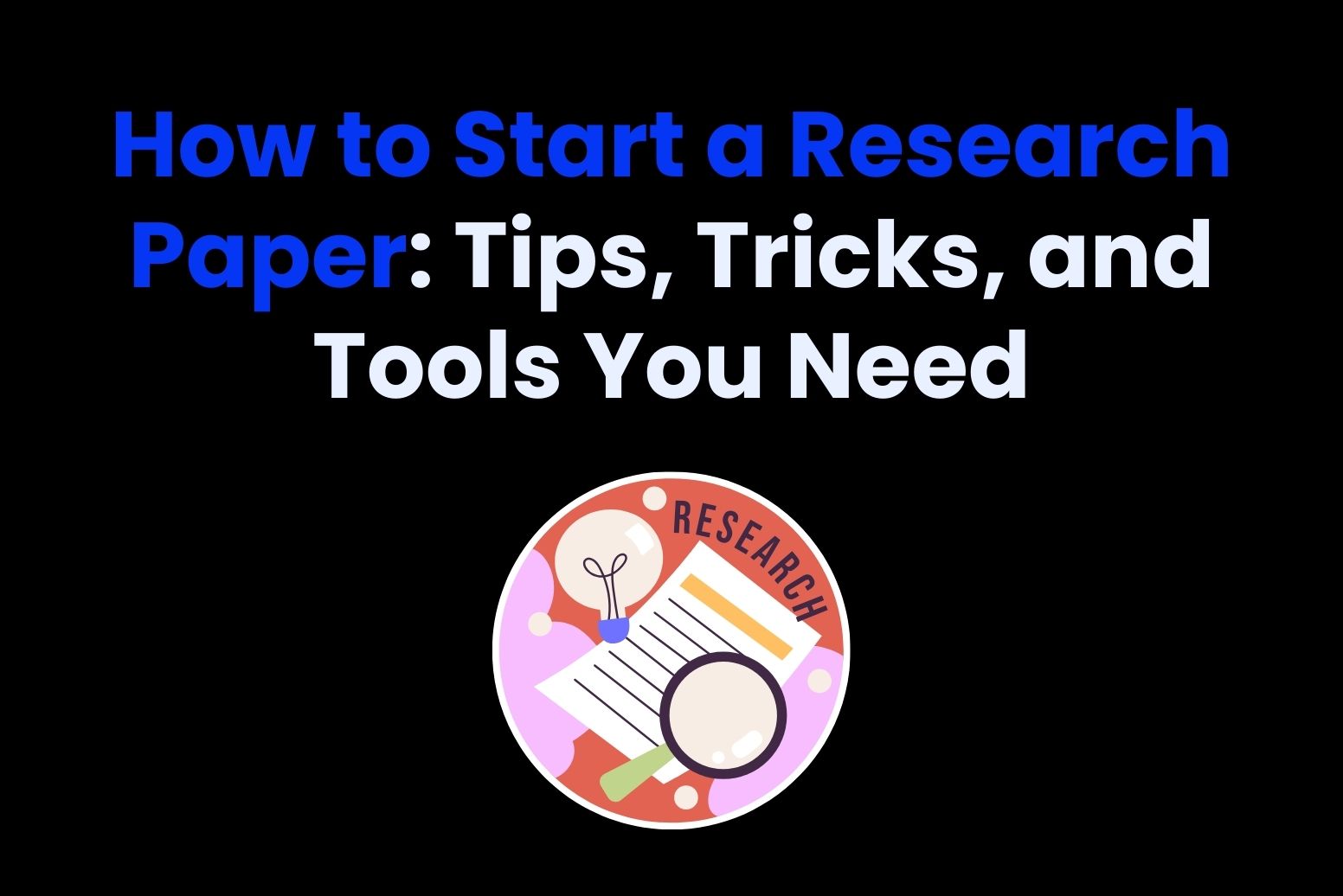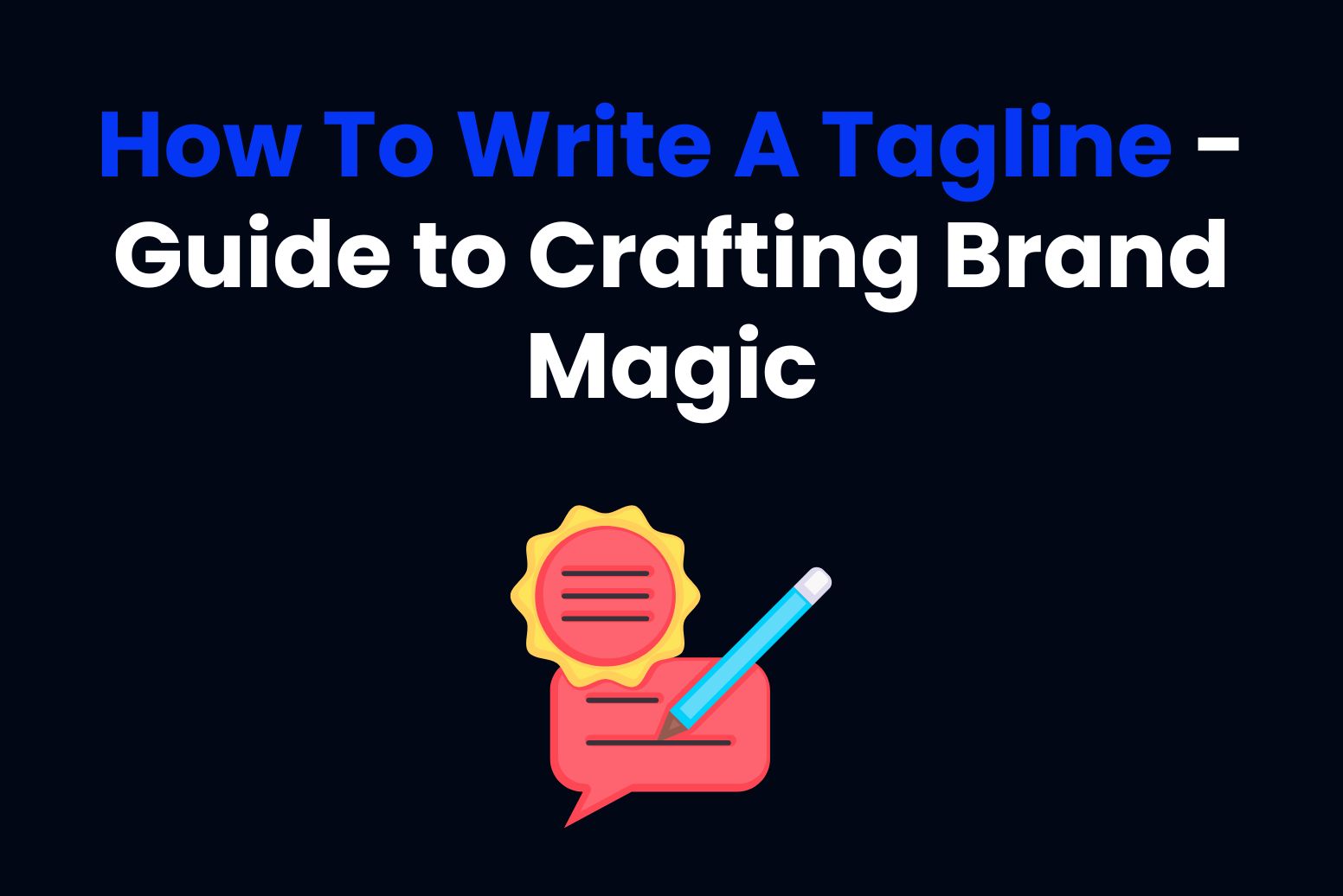Research papers are considered the backbone of academia and other professional fields because one can develop ideas, argue points, and create something new. Poor procedures of selecting the topic, organization of the content, and poor time management are the processes involved in starting a research paper, which are problematic for a student and a researcher. The modern tools, like Arvin AI, can assist how to start a research paper more comfortably. The following guide gives every vital tip, trick, and tool necessary to confidently launch into one’s research paper journey toward optimal results.
Part 1: Understanding the Basics of a Research Paper
What is a Research Paper?
A research paper is an academic writing on any specific topic. It actually answers a how to start a research paper or brings up a thesis through the help of critical analysis and valid arguments. Research papers could take various forms, argumentative, analytical, or even experimental. An argumentative paper tries to convince readers of the merit of a particular point of view, while analytical papers break down and analyze different aspects of a subject. An experimental paper would, in turn, present original findings from studies or experiments. Each of them plays a specific role and observes peculiarities.
Why Research Papers Matter?
These papers are in high demand within academics as well as professional life. These reflect deep information analytical power; show how much he or she is able to transform thoughts into words, hence giving back something new to the subject. How to start a research paper? Research paper work acts as a ticket for higher education and an indirect cause for job promotion within academia. At the same time, this fuels innovation outside academia. Quite a few important researches have shaped how the decisions are actually made. For instance, the DNA double helix paper by Watson and Crick, and influential studies on climate change, have influenced science and policy the world over.
Common Challenges Faced by Beginners
Writing a research paper is a daunting task for the uninitiated. First, there is the selection of an appropriate topic, which should balance between personal interest and academic relevance. Then comes the structuring of the paper, a difficult task for those with no experience in academic writing conventions. Of utmost importance is proper time management to avoid procrastination and writer’s block. Meeting these challenges early will definitely pave the way for a smooth sail in writing.
Part 2: Preparing to Write Your Research Paper
Selecting a Compelling Topic
Choosing the right topic is one of the most critical steps in how to start a research paper. It should align with your interests and meet the requirements of your assignment or field. A rich topic is focused yet addressable, with the potential to be discussed in a detailed manner within the given paper. Also, try reviewing recent trends, brainstorming ideas, and seeking professors or peer consultations in order to zero in on a good focus.
Conducting Preliminary Research
Preliminary research forms the backbone of your paper, allowing you to investigate available books, academic journals, and credible websites in understanding what is already there and what gaps your research has to fill. These will include reliable sources such as JSTOR, Google Scholar, and library archives. The more detailed the notes are, the easier it will be to refer to them later on in the process, with references that are organized.
Formulating a Research Question
A good research question lies at the heart of any well-crafted paper. The clearer the question, the more focused the investigation and analysis it guides. For instance, a general question would be, “Why is climate change bad?” whereas an appropriately specific question would be, “What are the economic impacts of climate change on small island nations?” Refining research questions through exercises helps you reach clarity and direction.
Creating an Outline
An outline is an essential implement for organizing your thoughts and structuring your paper. It provides a roadmap that ensures logical flow and coherence. A typical outline includes an introduction with a thesis statement, body paragraphs with topic sentences and evidence, and a conclusion that summarizes the findings and suggests future directions. Templates and examples can serve as helpful starting points for creating your outline.
Part 3: Writing the Research Paper
Crafting a Strong Introduction
It has to introduce and set up your research paper as well as engage your audience. Begin with attention such as surprising statistics, intriguing questions, or quotations that go directly into introducing the topic how to start a research paper. Following should be the contextual information related to the background information regarding the topic, and thereafter state the purpose and coverage in a thesis statement. After such a good introduction, any other reader will be inspired and curious about perusing further on.
Writing the Main Body
Body: The main body is where one develops the arguments and evidences supporting them. One topic, introduced by a topic sentence, is discussed in every paragraph. Data, quotes, and analysis are all different types of supporting evidence; all must be thoroughly explained and connected back to one’s thesis. Logical transitions from one paragraph to another ensure smooth narration. With well-structured arguments, one can successfully convince or educate his audience.
Concluding Your Paper
The conclusion summarizes your research and brings out the importance of your findings. It reiterates the thesis in the light of evidence provided, and it highlights the key takeaways. A good conclusion also indicates areas for further research, motivating further study of questions that remain unanswered. Avoid the introduction of new information in this section, as this should be a closure to your discussion.
Citing Sources Properly
It is also critical in academic writing that proper citation be used, since it gives credit to original authors and helps avoid plagiarism. Most common styles include APA, MLA, and Chicago, with their own specific rules for the referencing format. Zotero, EndNote, and even online citation generators make the process smooth and largely accurate. Proper understanding and adherence to standards in citations demonstrate academic integrity and professionalism.
Part 4: Enhancing Your Research Paper with Technology
Research paper writing has grown more effective, accurate, and accessible due to technology in modern digital times. From artificial intelligence to specialized tools, leveraging the latest advancements has transformed approaches to academic writing in many ways. This may involve how to start a research paper:
The Role of AI in Research Paper Writing
It is now a game-changer for any researcher, as AI automates each painful process and increases the rate of productivity. Artificial Intelligence enables tools to support you in reviewing the literature, selecting sources, and even in drafting content. A tool which can scan large databases within seconds assures you that only highly relevant information about your topic would come up. The supportiveness of AI tools also eases writing by means of grammar correction, plagiarism checks, and coherence in structuring-important for the researcher to let him/her concentrate on the quality rather than spend hours in format adjustment or syntax refinement.
Benefits of Technology for Brainstorming, Editing, and Formatting
AI tools go beyond basic writing assistance. They serve as brainstorming partners, generating topic ideas and suggesting unique angles. Advanced algorithms analyze keywords and provide suggestions for expanding or narrowing your research focus. For editing and formatting, AI tools are a necessity. They follow certain style guides, which make them compatible with formats such as APA, MLA, or Chicago. This eliminates the chances of errors and consumes much less time, so you can invest more time in critical analysis and building your argument.
How Arvin AI Can Simplify Research Paper Writing
Among the array of tools for AI writing tools, Arvin AI stands out. Arvin AI is designed to help both academics and professionals, with advanced features in it that will make the whole process of research very easy, whether one is an inexperienced or experienced writer. From the generation of appropriate topic ideas to full outlines, Arvin AI makes each stage of your research paper smoother. It automates conventionally hours-long tasks into smooth, user-friendly processes, including keyword research, formatting, and plagiarism checks. With its enhanced capabilities, Arvin AI lets researchers spend more time being creative and thinking critically, while all the technical work is done with ease.
Key Features of Arvin AI
- Advanced Research Capabilities:
Arvin AI does an excellent job in keyword extraction and source suggestion. By analyzing your topic, it identifies the most relevant keywords and connects you with reliable academic sources, saving hours of manual searching.
- Real-Time Outline and Content Generation:
With its real-time generation capabilities, Arvin AI creates comprehensive outlines and draft sections. This feature is particularly useful when you’re unsure how to structure your paper or require assistance in starting.
- Grammar and Plagiarism Check Tools:
Accuracy and originality are paramount in your content. Arvin AI has grammar-checking and plagiarism detection tools which will make you confident in quality.
Steps to Use Arvin AI
Step 1: Create your account on the website of Arvin AI. After that, just log in to the website and start using it via an interactive dashboard.
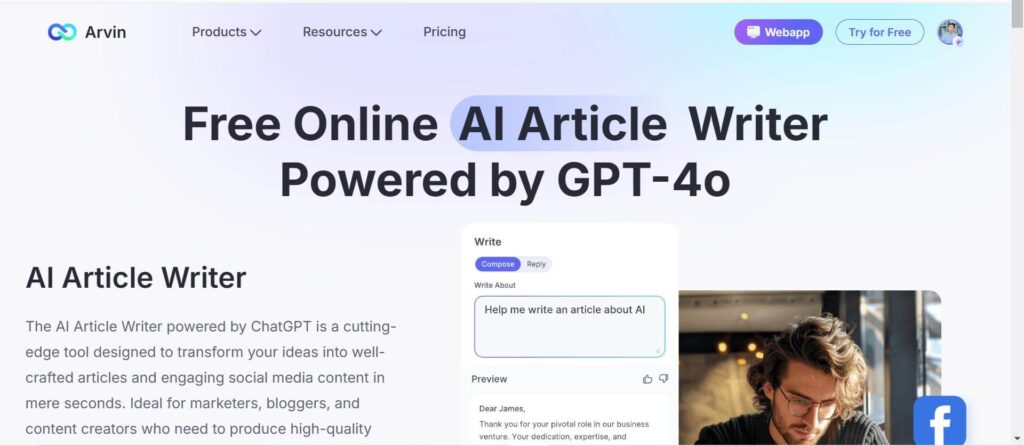
Step 2: Type your topic, research question, or keywords here. Arvin AI analyzes the input and generates ideas accordingly.
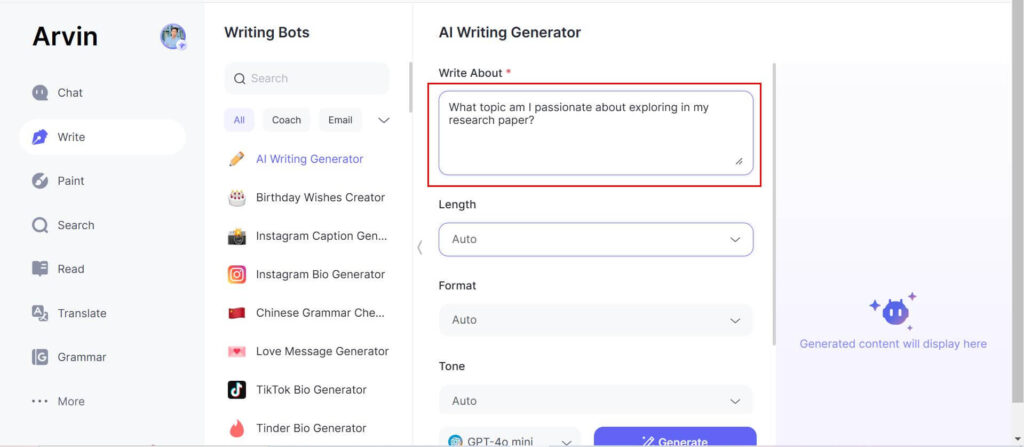
Step 3: Utilize Arvin AI to outline ideas, construct a structural outline, and create preliminary drafts. This alone will make writing so much faster.
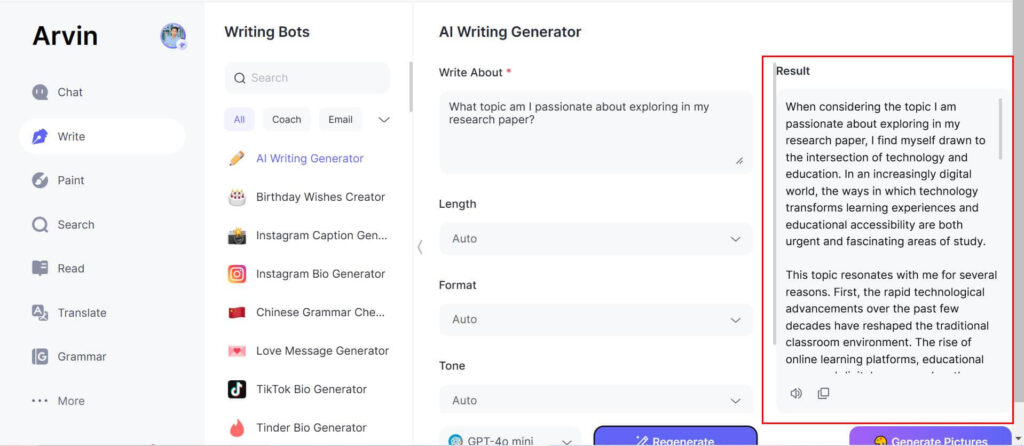
Step 4: Once your draft is ready, let Arvin AI refine it. Its grammar and plagiarism tools ensure a polished and original paper ready for submission. Now copy this and make your file.
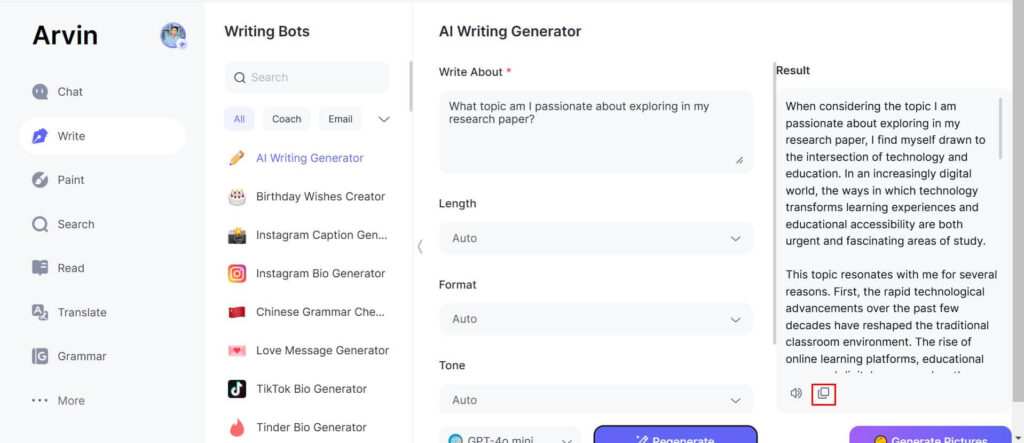
Part 5: Finalizing Your Research Paper
After drafting your research paper, the next critical step is finalizing it for submission. This involves meticulous editing, seeking feedback, and adhering to formatting guidelines.
Editing and Proofreading Tips
Editing and proofreading are necessary in ridding the paper of errors to improve readability. Check grammatical errors, uncomfortable phrasing, and logical inconsistencies of how to start a research paper. A well-edited paper shows professionalism and dedication.
Tools and Techniques for Effective Proofreading
Use Grammarly, Hemingway Editor, or Arvin AI as additional levels of proofreading. These tools will catch a lot of those mistakes that are so easy to overlook when proofreading you. Another good way is reading your paper out loud, and it will help in identifying minor issues and flow problems of how to start a research paper.
Peer Review and Feedback
Peer and mentor feedback can bring to light important views about your paper. Show your draft to people who know about the subject and have opinions regarding its weaknesses and where improvement is needed.
Incorporating Feedback to Strengthen Your Paper
When you receive feedback, be open-minded. Take each suggestion in turn and build on your arguments. This type of feedback can help you identify blind spots and produce a paper that is fair yet persuasive.
Preparing for Submission
Follow the essential formatting guidelines with regard to margin, font type, size, and spacing. Maintaining consistency within the formats shows attention to detail and adherence to academic standards.
Checking for Adherence to Guidelines and Instructions
Before submitting any paper, consider the particular submission guidelines stipulated by different journals or instructors. A paper should fall within any specified word counts, citation style, and other variables to avoid bases for rejection of the paper.
Part 6: Tips for Long-Term Success in how to start a research paper
It takes practice to how to start a research paper, and improvement usually comes with consistency. To sustain your performance, you must work at building strong habits and capitalizing on available resources.
Building Strong Research Habits
Get into a schedule whereby you consistently read, analyze, and write. Break your work down into smaller portions in order not to suffer burnout and lose focus. Subscribe to academic journals, attend webinars, and follow research blogs to keep up with new methodologies, tools, and insights in the field.
Leveraging Online Resources and Communities
Resources such as PubMed, JSTOR, and Research Gate allow users to access a plethora of peer-reviewed articles and enable collaboration. Such resources are highly valuable in order to keep up with developments and also to find credible references.
Importance of Networking with Other Researchers
Participate in online and offline academic communities. In this way, you can share your ideas, receive feedback, and find opportunities for collaboration that will enhance your research process.
Continuous Learning and Improvement
Keep a record of the feedback you have received on previously submitted papers. Studying previous critiques will help you avoid committing the same mistakes repeatedly and will help you become a better writer over time.
Participating in Writing Workshops and Seminars
Sign up for writing workshops or seminar classes. Such sessions have real-time tips and exposure to many writing styles and skills.
Conclusion
Writing a research paper is a 3D work: discipline, creativity and technology. This will help the candidates to follow the steps in a systematic way which we have discussed here with Arvin AI tool to transform how to start a research paper writing. Technology not only simplifies your tasks but also enables you to focus more on creating meaningful and impactful work. Think of any paper you write as one step of your journey as a researcher and a writer.
FAQs
1. How does technology improve the process of writing research papers?
Technology removes the rough edges out of writing by automating brainstorming, editing, and formatting. Increased research capacity, there are tools as well that includes AI that assists in enhancing the quality of the writing while saving time in the same.
2. What is so unique about Arvin AI compared to other writing tools?
From real-time content generation, checking for grammar and plagiarism, and suggesting sources, Arvin AI is a one-stop solution to writing research papers.
3. Is Arvin AI good for beginners in research paper writing?
Yes, Arvin AI is friendly and professionally designed to be used for constructing well-structured and high-quality research papers by beginners and experienced writers alike.
4. What are the tips to conclude a research paper?
Thoroughly edit your work, invite peer review, and, finally, format according to specifications. Use AI tools for grammar checks and plagiarism detection for polishing.



